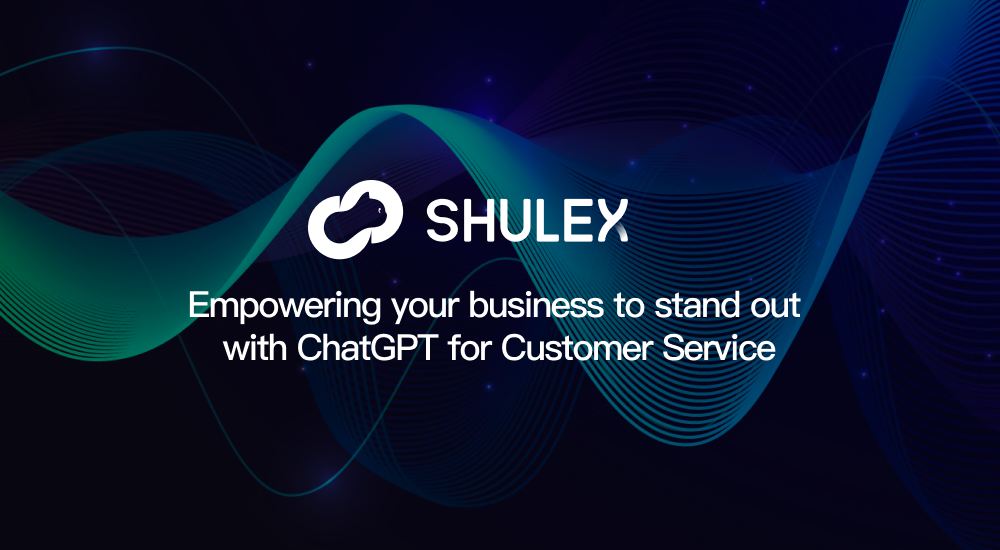Version:V1.0
- I. Core functionalities
- II. Administrator Usage Instructions
- 2.1 Getting Started
- 2.2 Reply History
- 2.3 Knowledge Base
- 2.4 Template Library
- 2.5 Intent Identification
- 2.6 Strategies
- 2.7 Knowledge Integration
- 2.8 APP Integration
- 2.9 Best practices for model tuning
- III. User manual
- 3.1 Overview
- 3.2 Prerequisites
- 3.3 Summary of letters
- 3.4 AI-assisted reply
- 3.5 Copywriting Optimizer
- 3.6 Free use ChatGPT
- Please feel free to contact us for any inquiries
I. Core functionalities
| Function | Description |
| Chat | Simulating customer messages, the intelligent customer service white-boxes the entire reply generation process for error correction. |
| Reply History | Each error correction of abnormal replies will improve the effectiveness of the next reply. |
| Knowledge Base | High-quality knowledge derived from FAQs, historical emails, and external knowledge base systems, used for responding to complex questions. |
| Template Library | Using template replies for some incoming message intents will improve the quality of the responses. |
| Intent Identification | Automatically identifying the intent of customer messages for configuring different processing strategies. |
| Strategies | Configuring different strategies such as AI replies, template replies, or transferring to human agents for different incoming message intents. |
| Knowledge Integration | AI automatically learns internal company knowledge such as product information, FAQs, and installation instructions. |
| APP Integration | Integrating email, ticketing systems, LiveChat software, etc., to achieve automatic replies. |
II. Administrator Usage Instructions
2.1 Getting Started
2.1.1 Sub-account management
add subaccount:
step1:click below URL:https://apps.voc.ai/#/setting/userrole
step2:hit the 'Invite User' button
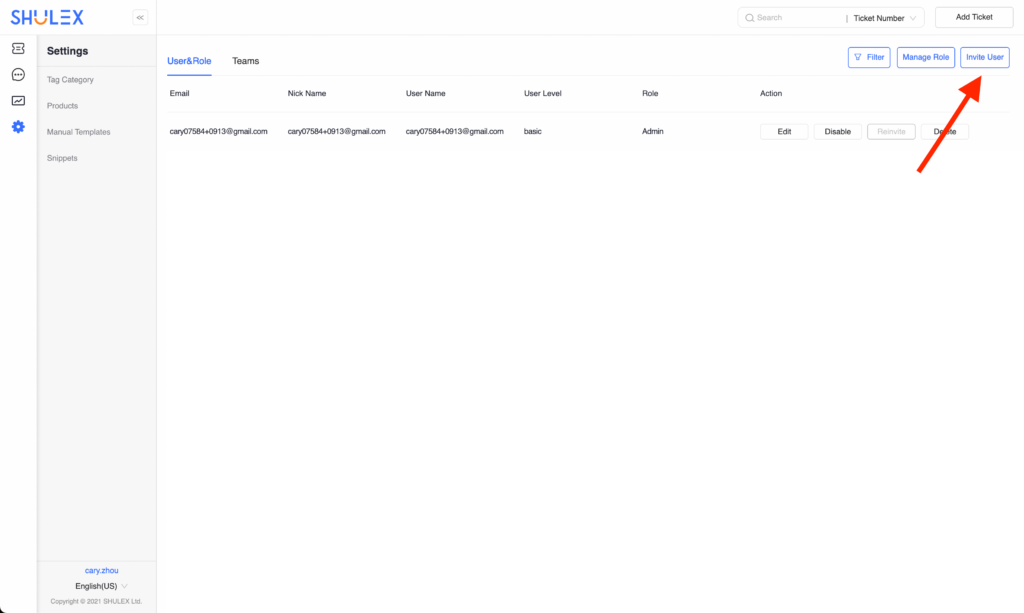
Step 3: Enter the email and nickname of your colleague, and fill in all the boxes marked with an asterisk and then save
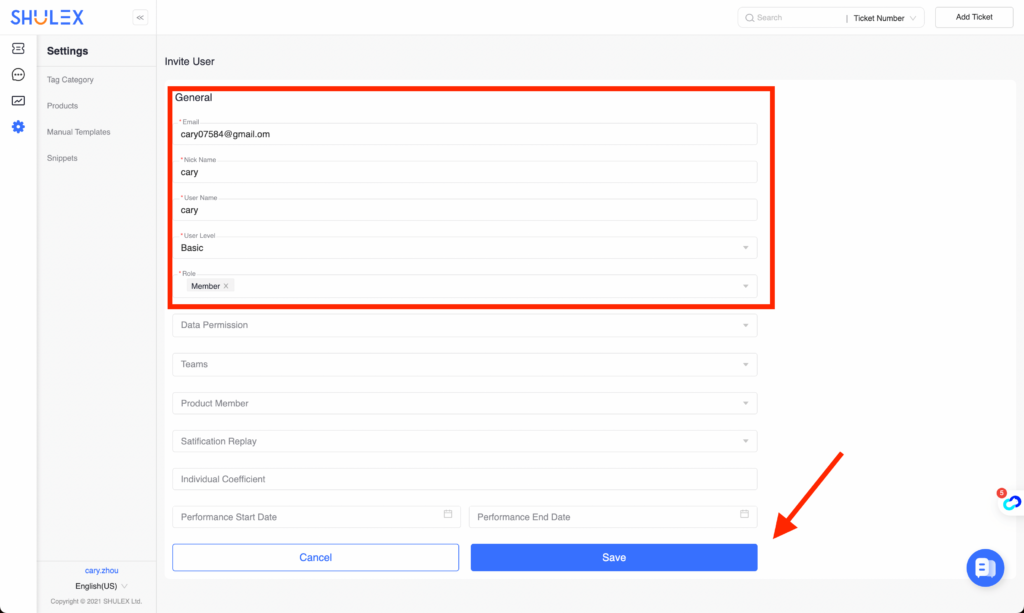
step4: after you hit the save button, there will be a verification email sent to the mailbox that you just added so that your team member could check the email and click the URL in it to set his/her password of Shulex account
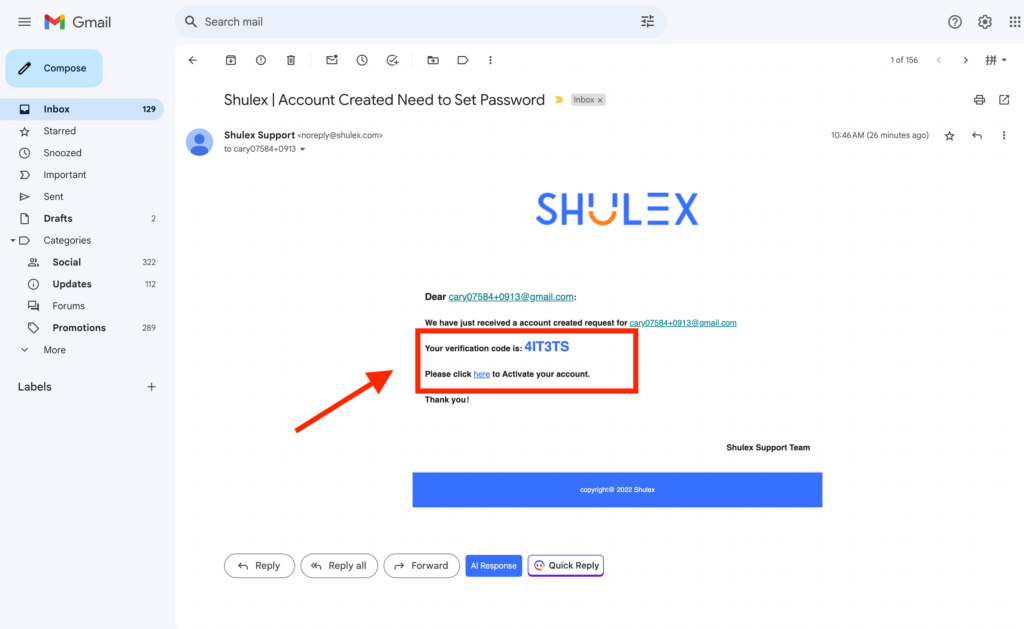
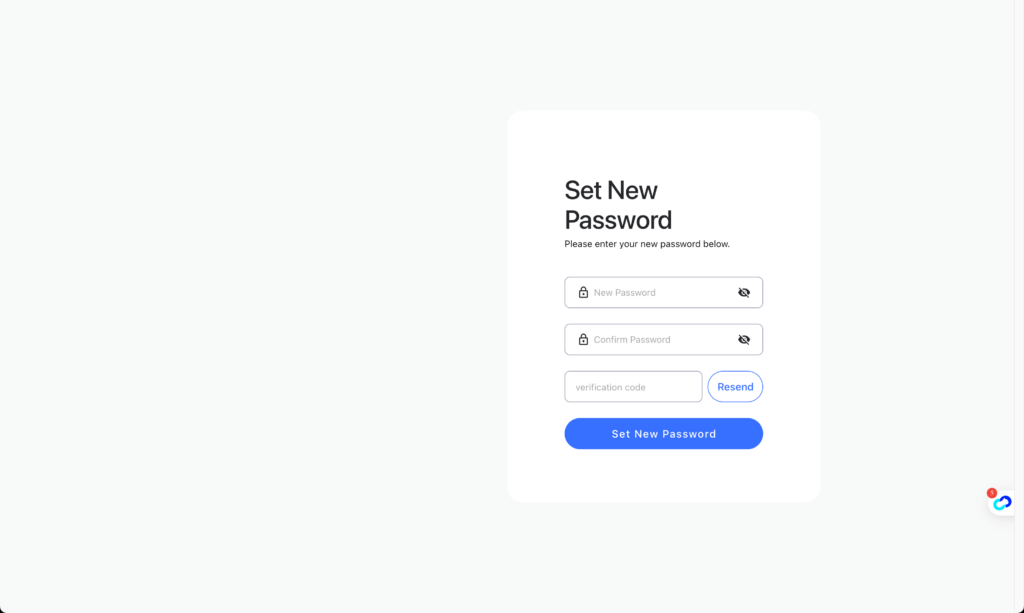
step5: Now your team memmber can log into the Shulex system under the same knowlege base with their own account(email address) and password:
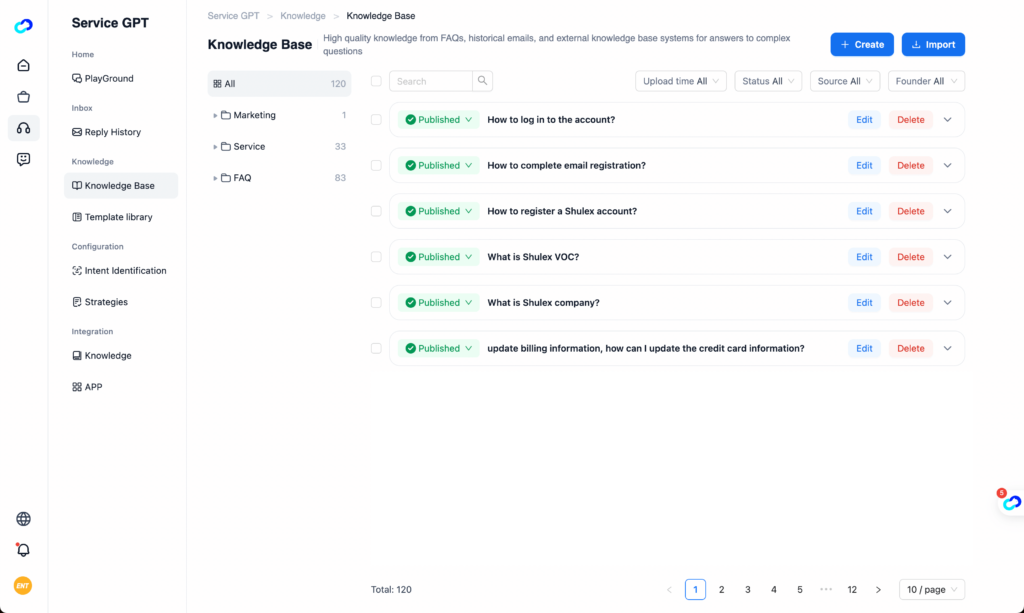
2.1.2 Chat
Simulating customer messages, the intelligent customer service white-boxes the entire reply generation process for error correction.

2.2 Reply History
Display all sent and received messages, all received message records from the service channel, and AI reply records.
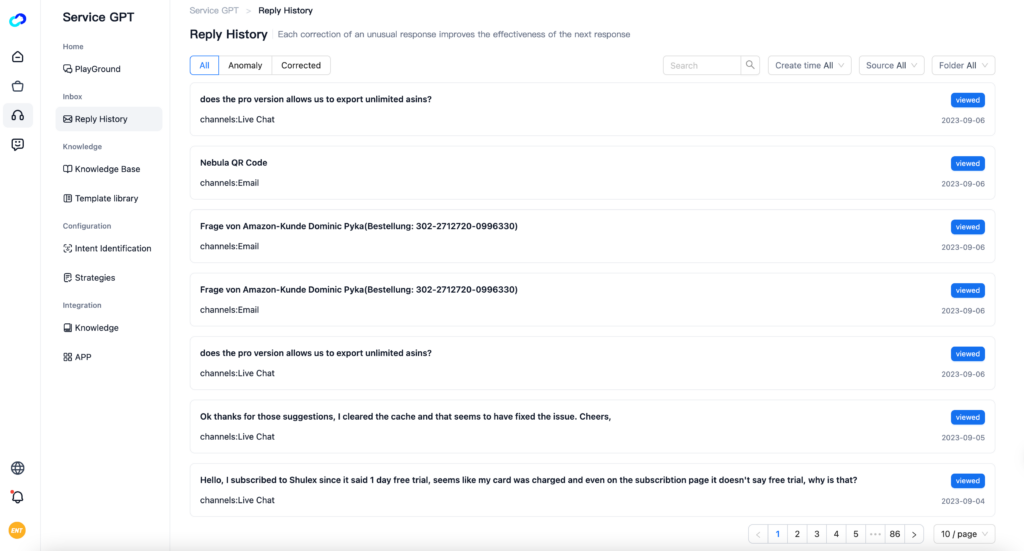
Support viewing the detailed history of individual reply messages, as well as tracing and correcting any abnormal reply messages.
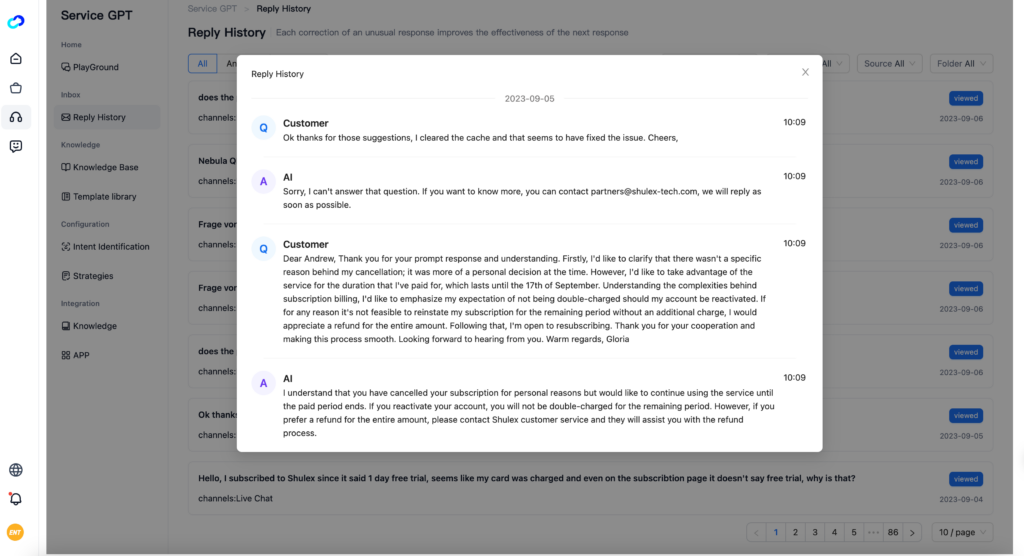
2.3 Knowledge Base
The knowledge base is used to generate AI replies. Every time a customer sends a message, the AI will search the knowledge base for several relevant pieces of information, summarize them, and generate a corresponding reply.
● The system includes FAQs, historical emails, and knowledge obtained from the knowledge base.
● Users can add, delete, and modify knowledge, as well as mark correct knowledge.
● Users can manage knowledge hierarchically.
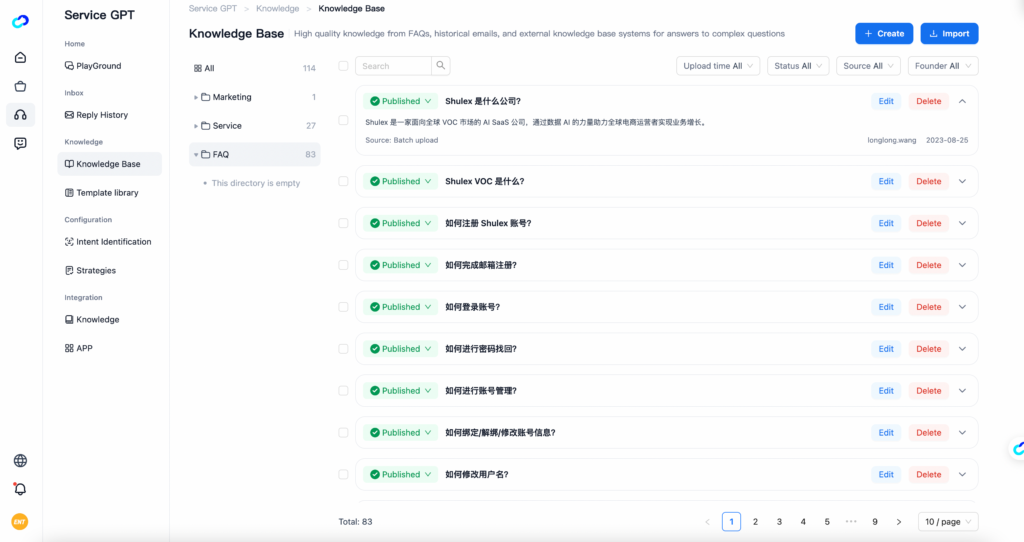
2.4 Template Library
Users can upload reply templates, which are different from knowledge and can be used directly to reply to customers. They are suitable for fixed scenarios such as discount inquiries, price inquiries, etc.
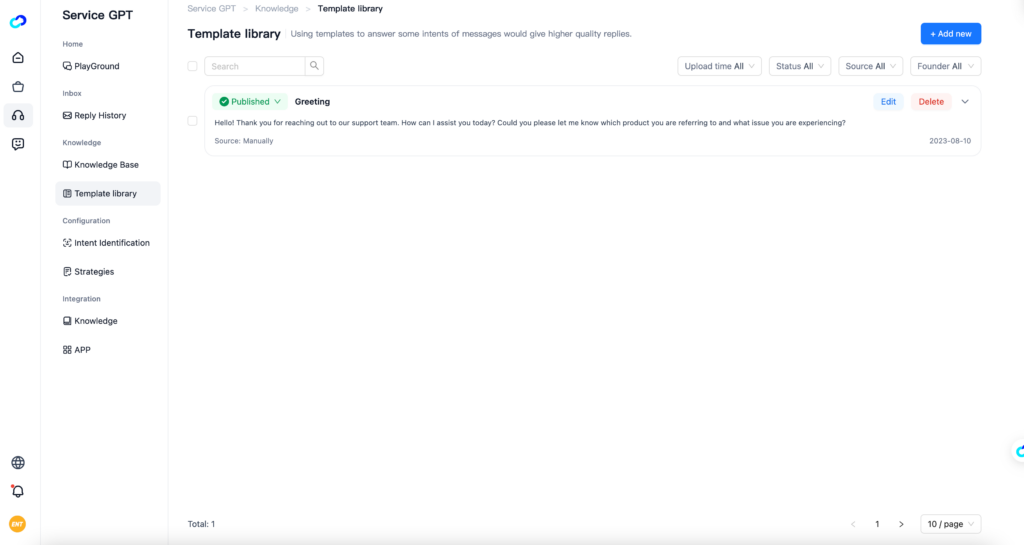
2.5 Intent Identification
The AI can recognize 30+ common customer intent in their messages. Administrators can use these intents to develop different message handling strategies. For example, troubleshooting can be handled by the AI, while issues related to customer privacy or security can be directly transferred to human customer service.
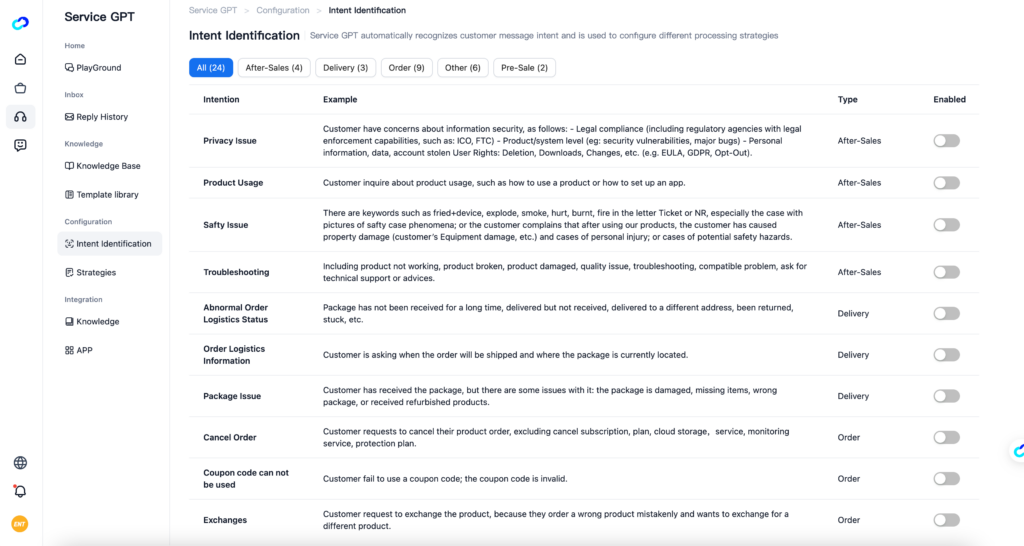
2.6 Strategies
● Rule input (source, language, multi-round intent, sales channel)
● Operation and content output (transfer to human, template reply, AI reply, after-sales processing, etc.)
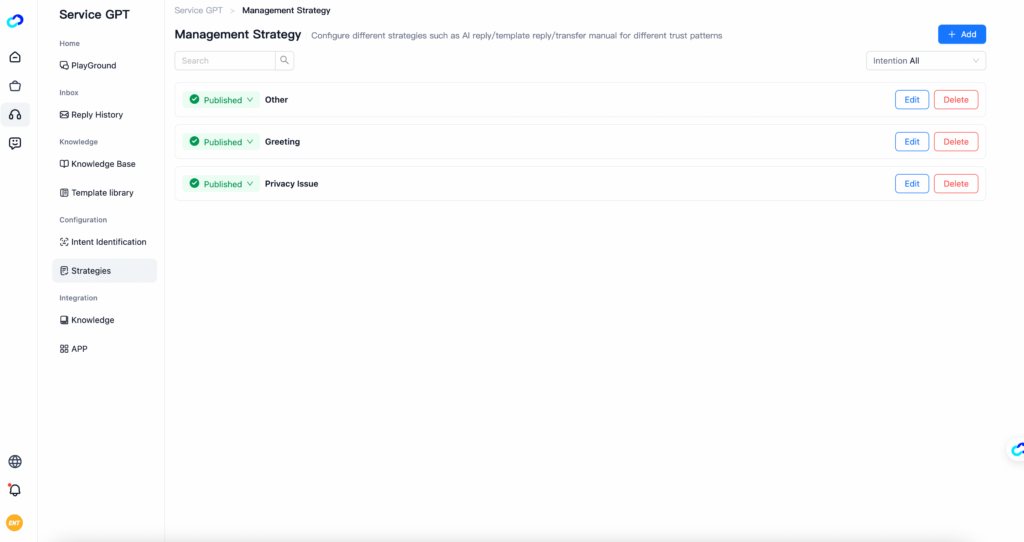
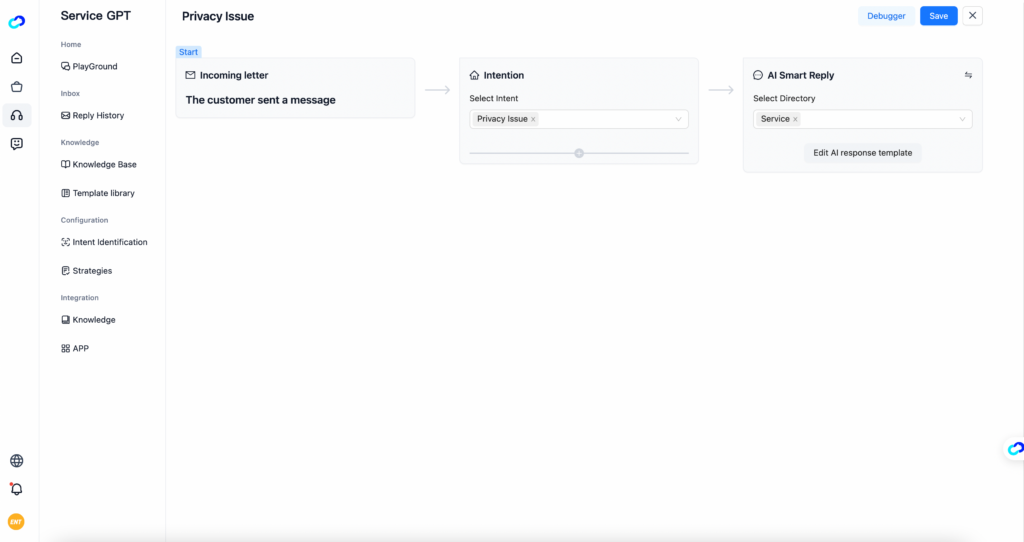
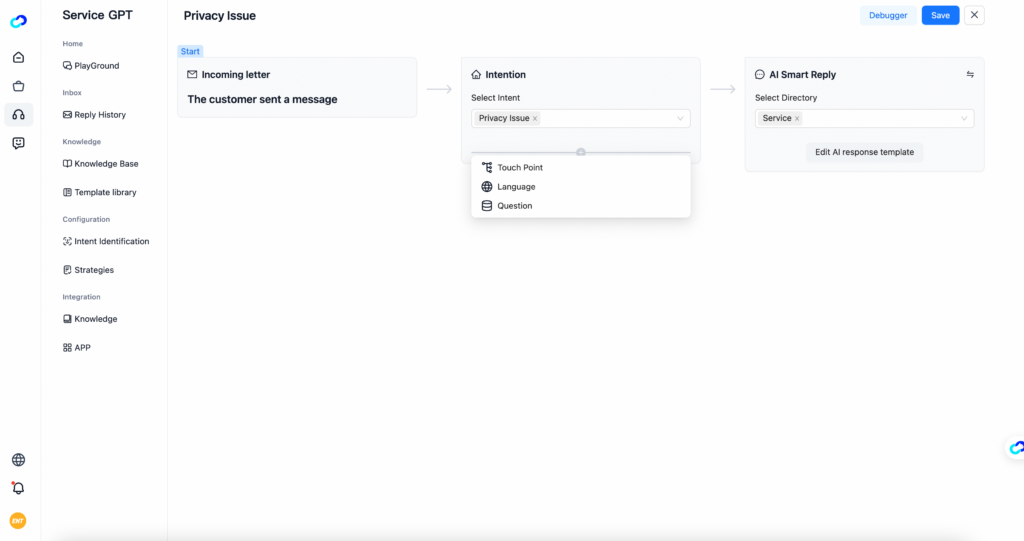
2.7 Knowledge Integration
Supported integration types:
● Local documents
● FAQ import
● Historical conversations
● Knowledge base systems
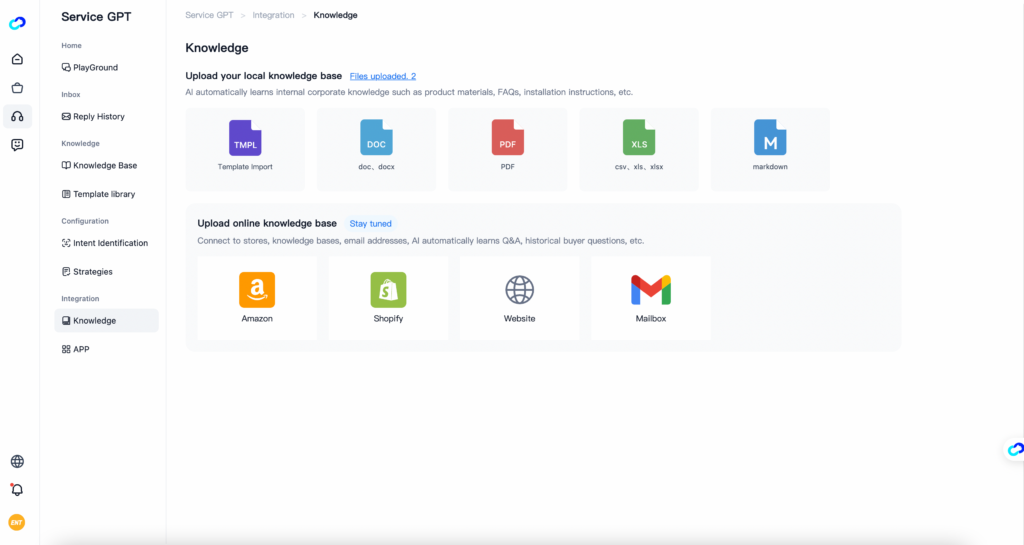
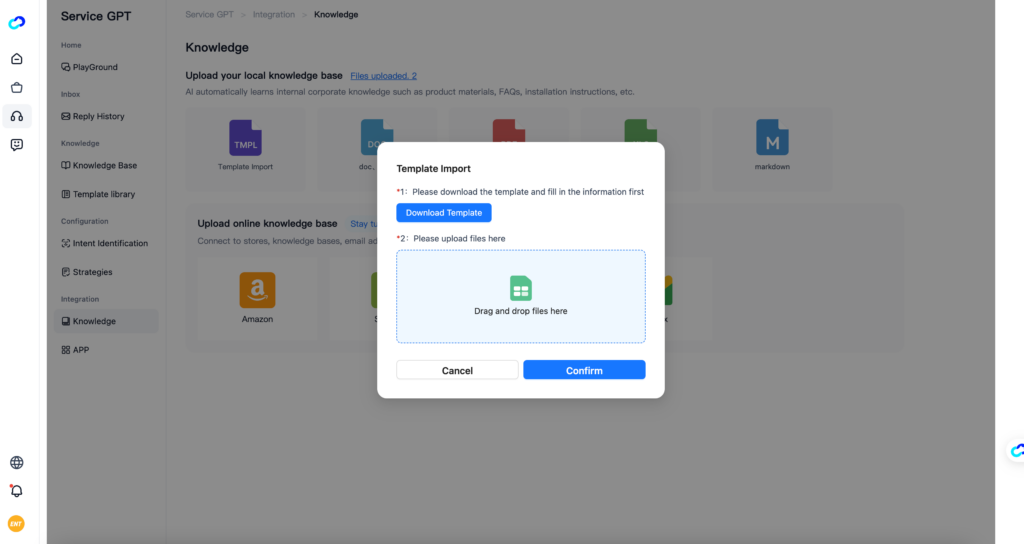
2.8 APP Integration
Supported integration types:
● Browser plugins
● Major Livechat platforms
● API
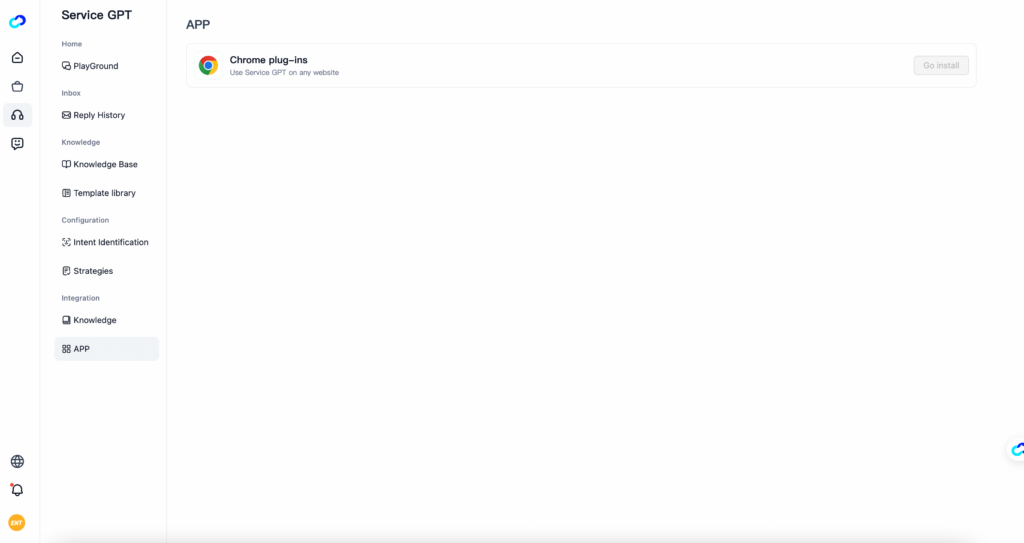
2.9 Best practices for model tuning
A knowledge base serves as the brain of an AI chatbot, so building a high-quality knowledge base is crucial for improving the AI's problem-solving capabilities.
The simpler, more direct, and comprehensive the knowledge imported, the easier it is for Shulex AI Chatbot to read and understand them. If humans find the content confusing to read, the AI will also be confused.
Here are some principles for building knowledge:
- Answer completeness: Assuming potential questions that customers may ask, it is important to ensure that the answers are relevant to the questions and expressed in an easy-to-understand manner. Avoid extremely brief answers such as "yes" or "no"; the more complete the sentence, the less likely the AI is to be ambiguous. Don't worry about the AI being too verbose; it will use concise language.
- Structured: Use headings, tables, numbered lists, and bullet points to help AI easily find and provide the answers that customers are looking for.
- Accuracy: It is recommended that expert customer service and product engineers check the knowledge entered into the system. Many AI errors are caused by outdated knowledge.
- Explanation of professional terminology: When using specialized terminology, explain its meaning or spell out the acronym. Don't worry, it's not too troublesome. Once you explain the term, you only need to do it once, even if you use the term multiple times.
- Knowledge classification: If you have multiple product types, sales channels, or user types, and their questions are very similar but require completely different answers, you can establish a catalog to differentiate this knowledge. Use 'Strategies' to configure knowledge
